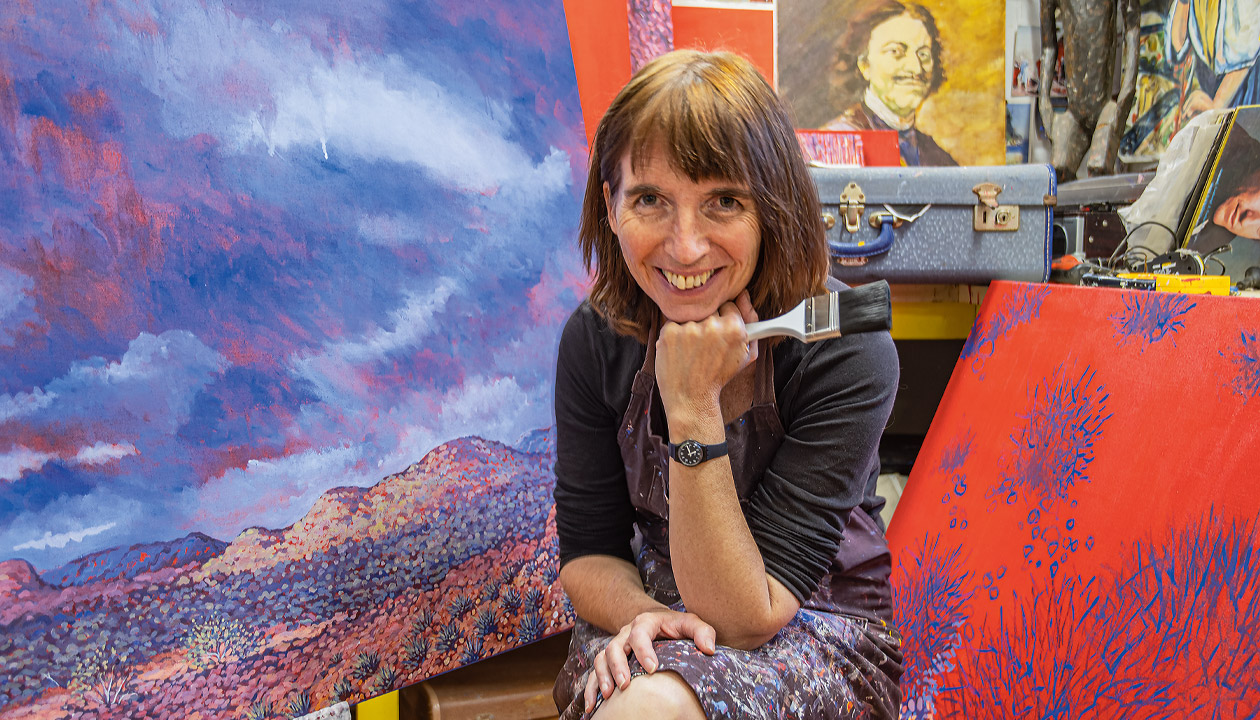Central Australian painter Sarah Brown balances a job advocating for the health of Indigenous Australians with producing powerful desert images.
Story + Photo Kerry Sharp
International gallery owners and high-end art collectors, everyday art-loving Aussies and the desert geologist who walked into a gallery wanting a painting of his ‘workplace’ to hang on his wall – all are equally enchanted by Sarah Brown’s big, bold renditions of the Central Australian landscape. Her paintings of red dunes, spinifex, waterholes and haunting ghost gums reflect her feelings for the remote country where she’s lived and worked for nearly 30 years.
Sarah came here first as a bush nurse and now manages the Purple House, the Alice Springs hub for the Western Desert Dialysis Service, an Aboriginal, community-controlled health service providing groundbreaking care for people with end-stage renal disease in 18 remote communities.
The mother of three, who paints “for after-hours therapy” every day that she’s not out bush visiting patients or attending meetings, was raised in Maryborough, Qld, and as a schoolgirl started drawing and painting the town’s old timber houses in ink and watercolours. She had her first solo exhibition on her 16th birthday and staged three more by the time she was 19. “They helped put me through uni,” Sarah says.
In 1992 Sarah began nursing in Top End, Kimberley and Central Australian communities. “I spent 10 years out bush, often on call, sleep deprived and with three young kids in tow, so I had no time for art-making, but I did a lot of looking.”
When she took on the Purple House job in 2003, she yearned to paint again, despite the long hours. She looked for a medium that suited Central Australia. “Albert [Namatjira] had mastered those beautiful vibrant desert hues with his watercolours but I couldn’t get the watercolours strong enough to capture those really bold, rich desert colours I saw. I loved the smell of oils but you have to be pretty organised and work months in advance of exhibitions for the paint to dry properly, so I started using acrylics.”
This story excerpt is from Issue #128
Outback Magazine: Dec/Jan 2020









